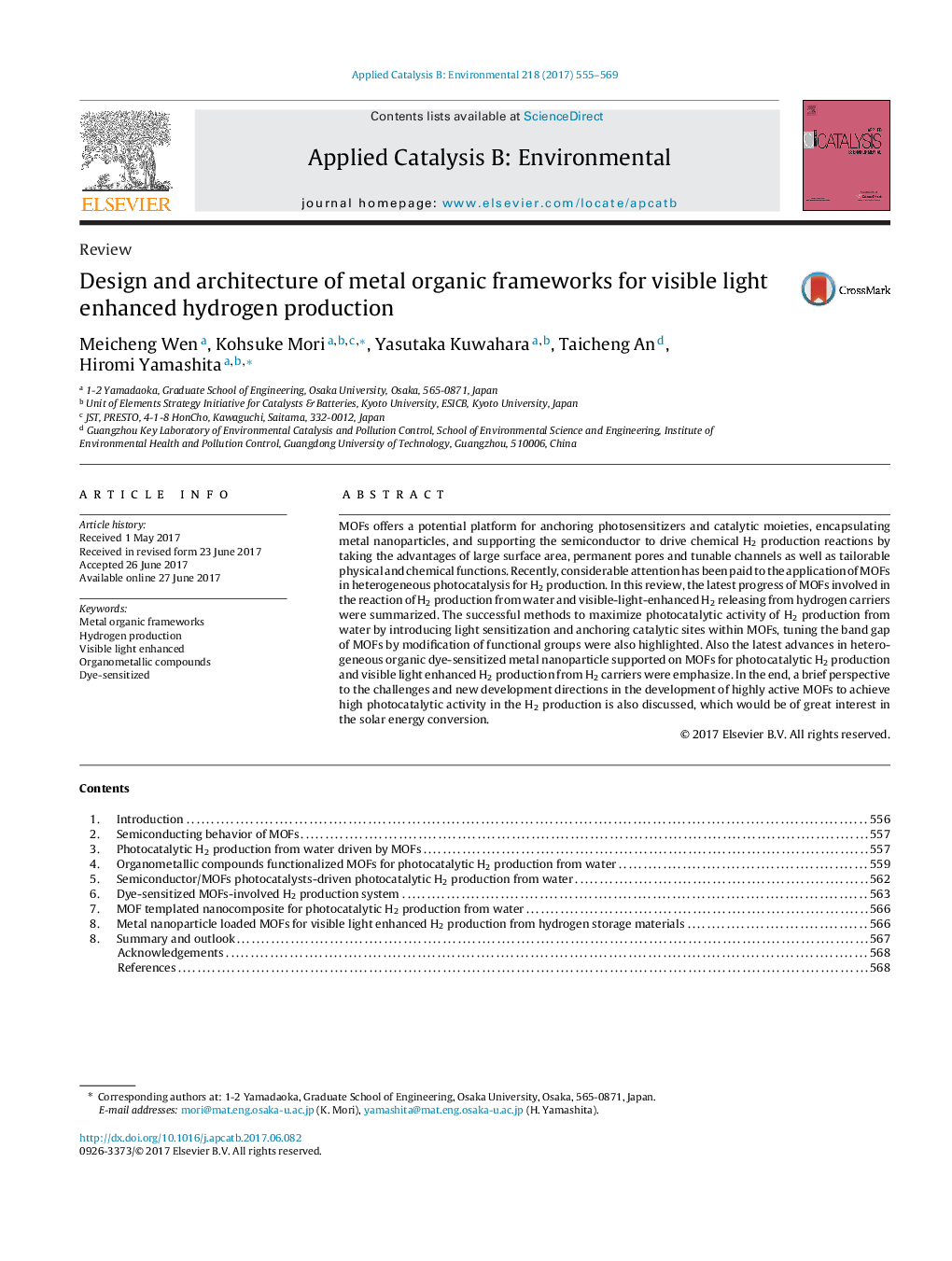| کد مقاله | کد نشریه | سال انتشار | مقاله انگلیسی | نسخه تمام متن |
|---|---|---|---|---|
| 6453798 | 1418802 | 2017 | 15 صفحه PDF | دانلود رایگان |
- Systematically review of the recent progress in the design and architecture of MOFs involved H2 production system.
- Divided the present MOFs involved H2 production systems into several categories.
- Proposed the basic mechanism for light-enhanced H2 production over photoactive MOFs.
- Giving some insight for designing of more effective MOF-based photocatalysts for H2 production.
MOFs offers a potential platform for anchoring photosensitizers and catalytic moieties, encapsulating metal nanoparticles, and supporting the semiconductor to drive chemical H2 production reactions by taking the advantages of large surface area, permanent pores and tunable channels as well as tailorable physical and chemical functions. Recently, considerable attention has been paid to the application of MOFs in heterogeneous photocatalysis for H2 production. In this review, the latest progress of MOFs involved in the reaction of H2 production from water and visible-light-enhanced H2 releasing from hydrogen carriers were summarized. The successful methods to maximize photocatalytic activity of H2 production from water by introducing light sensitization and anchoring catalytic sites within MOFs, tuning the band gap of MOFs by modification of functional groups were also highlighted. Also the latest advances in heterogeneous organic dye-sensitized metal nanoparticle supported on MOFs for photocatalytic H2 production and visible light enhanced H2 production from H2 carriers were emphasize. In the end, a brief perspective to the challenges and new development directions in the development of highly active MOFs to achieve high photocatalytic activity in the H2 production is also discussed, which would be of great interest in the solar energy conversion.
We highlight the recent progress in the design and architecture of MOFs involved H2 production system and divided into 4 categories: novel MOFs photocatalysts, Semiconductor/MOFs photocatalysts, Dye sensitized MOFs, and MOFs templated photocatalysts. The synthetic strategies described here are simple and general. Thus allowing a strong protocol for designing various nanostructured photocatalysts.193
Journal: Applied Catalysis B: Environmental - Volume 218, 5 December 2017, Pages 555-569
